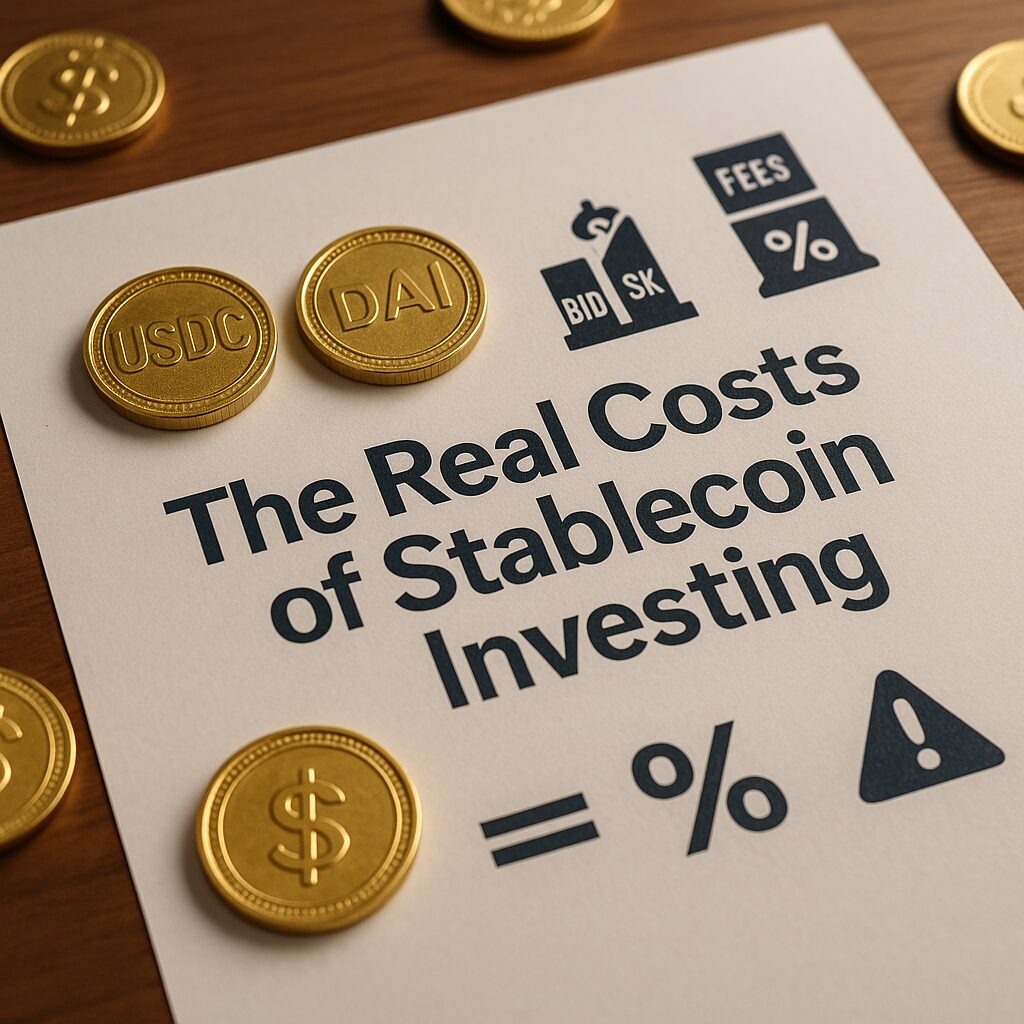Forget Bitcoin. Forget trading. The question is: can stablecoins fund your retirement?
Rethinking Retirement in a Digital Age
For generations, retirement planning meant:
- Working 40 years
- Saving slowly in a bank
- Investing in stocks or real estate
- Hoping it’s enough by age 65
But today, a new idea is rising — one that doesn’t depend on stock markets or inflation-prone currencies:
Can stablecoins — digital dollars — generate enough passive yield to fund your retirement?
This post answers that question with real math, strategies, and risk analysis.
1. What Would “Stablecoin Retirement” Look Like?
A retirement strategy using stablecoins might involve:
- Holding large amounts of USDC, DAI, or TUSD
- Earning 4–10% yield through DeFi or CeFi platforms
- Automating monthly income withdrawal
- Minimizing tax and regulatory risk
The goal:
Live off the yield without touching the principal.
Let’s see if it’s realistic.
2. How Much Do You Need?
Let’s assume a target retirement income of $3,000 per month.
| Scenario | Annual Yield | Required Capital |
|---|---|---|
| Conservative | 4% | $900,000 |
| Moderate | 6% | $600,000 |
| Aggressive | 10% | $360,000 |
Note: These are gross yields before tax and fees.
Your real yield depends on:
- Platform reliability
- Asset security
- Tax residency
- Market access
The lower the risk, the higher the required capital.
3. What Platforms Could Support This?
To generate retirement income from stablecoins, you’ll need platforms that offer:
- Reliable yield
- Long-term track record
- Clear reporting and compliance
Top CeFi Platforms:
- Nexo
- SwissBorg
- Ledn
Top DeFi Protocols:
- Aave
- Yearn
- Curve + Convex
Consider diversifying across both types to spread risk.
4. The Compounding Strategy That Most People Miss
The power of stablecoin retirement isn’t just in the yield — it’s in compounding while earning yield.
For example:
- Start with $400,000 earning 6%
- Reinvest earnings for 5 years
- Capital grows to ~$536,000
- Then begin withdrawals of $2,500/month indefinitely (assuming conservative reinvestment of leftover yield)
The first 3–5 years of compounding dramatically increases sustainability.
Most people withdraw too early. Patience = freedom.
5. How to Withdraw Without Killing the Goose
Here’s a safe withdrawal model:
- Withdraw only yield (not principal)
- Recalculate annually based on real yield
- Use auto-transfer tools (e.g., Zapier + exchange APIs)
- Always leave 6–12 months of cash as buffer
Withdrawals should be stable, automated, and monitored monthly.
Bonus tip:
Split income across multiple stablecoins and platforms to reduce single-point failure.
6. Real Retirement Risks You Must Account For
Retiring on stablecoin yield isn’t magic.
You must plan for:
- Regulatory change: Your country may tax stablecoin earnings
- Platform failure: Even trusted names can collapse
- Depegging events: Like with USDN or UST
- Liquidity freeze: Temporary loss of access
- Inflation drift: Stablecoins track fiat, which may lose purchasing power
You need a backup plan:
- 10–20% in real-world assets
- Emergency fiat reserve
- Multi-platform strategy
- Track global news
7. Who Is Already Doing This?
- Digital nomads living on 5–8% stablecoin yield
- Crypto freelancers earning in USDC and storing in CeFi wallets
- Remote entrepreneurs converting revenue into passive yield
- Retirees in tax-free countries using stablecoins instead of bank interest
This is already happening — quietly, globally, and legally.
8. Is This a Smart Strategy or Fantasy?
It depends on your expectations.
| Factor | Traditional Retirement | Stablecoin-Based |
|---|---|---|
| Return predictability | Moderate | Variable |
| Control over funds | Limited | Full (non-custodial) |
| Inflation protection | Weak | Weak (pegged to fiat) |
| Access & liquidity | Limited | 24/7 global access |
| Minimum capital | High | Moderate (if yield is high) |
| Risk | Low to medium | Medium to high |
Stablecoin yield is not a substitute for financial education or diversified planning.
But it can be a powerful supplement or even core strategy with proper execution.
Final Thoughts: Retiring Without Borders
Retirement no longer means pensions or savings accounts.
Today, it could mean:
- A hardware wallet
- A portfolio of stablecoins
- A network of trusted yield platforms
- A global lifestyle, funded by digital yield
Yes, you can retire on stablecoin yield. But only if you treat it like a real system — not a shortcut.
Plan it. Test it. Diversify it. Then let it work.

